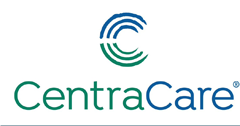A Regional System for Delivery of Primary Percutaneous Coronary Intervention in ST-Elevation Myocardial Infarction: STEMI-St. Cloud
Document Type
Article
Publication Date
12-2009
Abstract
BACKGROUND:
Strategies of emergency care in the treatment of ST-segment elevation myocardial infarction (STEMI) have evolved rapidly over the past two decades to include primary percutaneous coronary intervention (PPCI) when possible. Most U.S.-based transfer programs still use complicated protocols that include fibrinolytic therapy often resulting in transfer delays, inappropriately applied therapy (wrong diagnosis) and bleeding and stroke complications. These protocols are often emphasized in low-volume centers. We implemented a program absent fibrinolytic therapy and applied it to a network of 25 participating hospitals over a 100-mile radius in central Minnesota.
METHODS AND RESULTS:
One-thousand consecutive patients ages 21 to 90 who presented within 12 hours of the onset of symptoms consistent with MI from April, 2004 to January, 2008 were included in this registry. Prior to transfer to the cardiac catheterization laboratory, patients received aspirin and heparin. Clopidogrel was added to the protocol in January, 2007. Glycoprotein (GP) IIb/IIIa inhibitors were typically utilized after diagnostic catheterization and prior to PPCI. Median door-to-balloon time was 56 minutes at the PCI Center and 110 minutes from referral sites (RS). Of the transfer patients, 71% underwent helicopter transfer. The success rate for PPCI was 99.4%. Despite inherent transfer delays, there was no difference in mortality between the PCI Center and RS. Overall mortality rates in-hospital, at 30 days, at 6 months, and 1 year were 2.1%, 2.9%, 3.8% and 4.5%, respectively, with follow up on 998 of 1,000 patients. In-hospital stroke, reinfarction and major bleeding were 0.7%, 2.0% and 2.7%, respectively.
CONCLUSIONS:
Despite increasing trends toward a pharmacoinvasive approach in transfer patients with STEMI, a protocol which stresses rapid transfer and PPCI results in excellent outcomes, with very low complication rates without fibrinolytic therapy.
Recommended Citation
Alpin, Richard; Tiede, Daniel; Lovitz, Cheryl; Gartner, Mark; Erickson, Bernard; Schmidt, Wade; Pelzel, Jamie M.; and Mahowald, John, "A Regional System for Delivery of Primary Percutaneous Coronary Intervention in ST-Elevation Myocardial Infarction: STEMI-St. Cloud" (2009). Articles. 51.
https://digitalcommons.centracare.com/articles/51


Comments
CentraCare Heart & Vascular Center